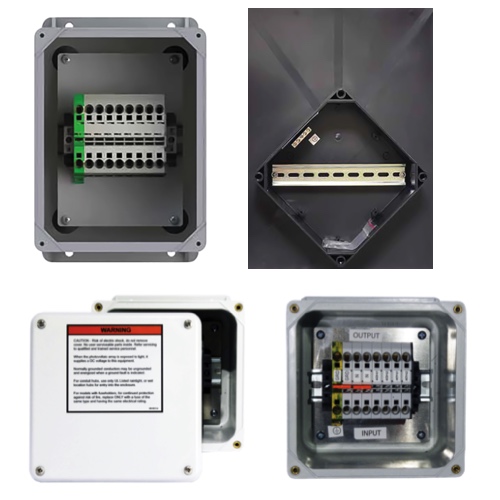Solar Enclosures

Renewable energy systems rely on enclosures for solar energy. Such enclosures are essentially protective boxes for the critical electronics—like batteries, inverters, and sensors—that must remain safe and functional in a wide range of environmental conditions. High-quality solar enclosures promise sturdy construction and sound designs that keep the internal components safe from dust, moisture, and temperature extremes. Many solar enclosures include integrated mounting plates or custom internal solutions that securely hold rechargeable batteries and other essential equipment.
Solar power enclosures are built for durability and versatility, key and sustainable characteristics not just in solar energy technology but in every type of renewable energy. From tested compatibility with a multitude of solar panel connector types, the enclosure supports reliable operation and efficient energy transfer. From the rear surface and integrated mounting points, you can easily attach sensors or other types of hardware to the enclosure. That's why solar power enclosures are essential parts of any solar energy system.
More Information about Solar Enclosures
Custom characteristics of solar enclosures make them adaptable for many different kinds of installations, whether concentrating on Internet of Things solutions or traditional off-grid solar energy. The enclosures themselves are optimized for internal space, providing access to all necessary components to ensure trouble-free operation. They have no unnecessary housing sections, so the internal layout is as neat and efficient as the designers could make it.
How Solar Power Works in Industrial Applications
A basic solar setup includes:
- Solar panels. The solar panel is going to absorb sunlight and convert that sunlight into energy.
- Charge controllers. The charge controller is going to direct the energy that's absorbed by the solar panel to specific locations.
- Batteries. A battery stores energy that is absorbed by the solar panel when it is not being used by the electrical load.
- Inverters. An inverter takes DC power and converts it to AC power for use in homes or businesses.
The solar panel is absorbs sunlight and converts that sunlight into energy, in this case, DC power. That energy is going to be transferred over to the charge controller, which dictates where that energy actually goes. The charge controller is going to be wired to both the battery and it's also going to be wired to an electrical load. The charge controller will monitor the energy that is coming off of the solar panel and determine where that power is needed. For instance, if power is needed for an electrical load, it will send power in that direction. If there's no power that's needed for that electrical load, it will send power to the battery to store for later use. In the case where there is no need for power at the electrical load and the battery is full, the charge controller will dissipate that energy in the form of heat. In other applications, an inverter may be used in a solar setup. The inverter works by drawing energy, DC power, from the solar panel. It converts that energy into AC power, which can then be used in homes and businesses.

